Art Deco Sunday Afternoon Tea Dance (Page Four)
Did you know? - A tea dance, or thé dansant (French: literally dancing tea) is an afternoon or early-evening dance. The function evolved from the concept of the afternoon tea, and traces its origin back to the French colonization of Morocco.Books on Victorian Era etiquette even included instructions for hosting such gatherings. A frequent feature of tea dances was the presence of a live orchestra – often referred to as a palm court orchestra – playing light classical music. The types of dances performed during tea dances included Waltzes, Tangos and, by the late 1920s, The Charleston.
Tea dances are a common cultural reference in early 20th century fiction as a staple of genteel society, where people normally attend these receptions while visiting resort towns (like Brighton, the Hamptons, Provincetown, or Ogunquit). One example can be seen in the 1925 hit Broadway musical No, No, Nanette. A tea dance provides the setting for the plot's climax when the main characters travel to Atlantic City (the same musical also features the famous song "Tea for Two" which is sung prior to this scene).
In the United States, the term has been broadened to refer to any casual afternoon dance event. An infamous example was the 1981 Hyatt Regency walkway collapse in Kansas City, Missouri, that occurred during an afternoon dance which killed 114 people and injured 200.
So.... Let's Dance
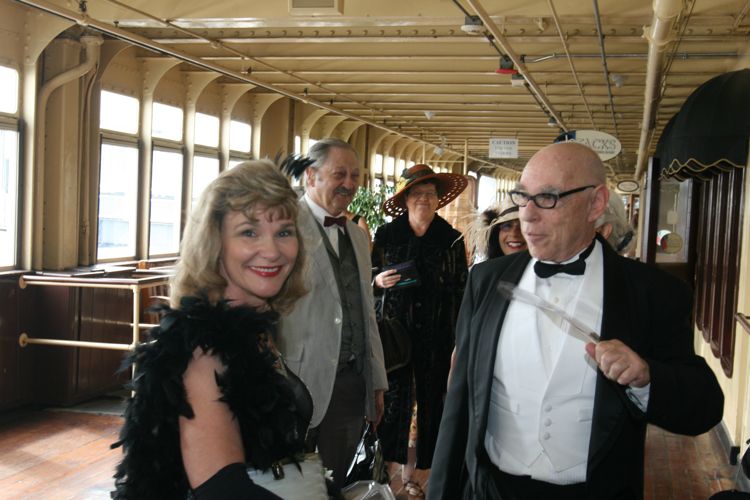
Arriving in style
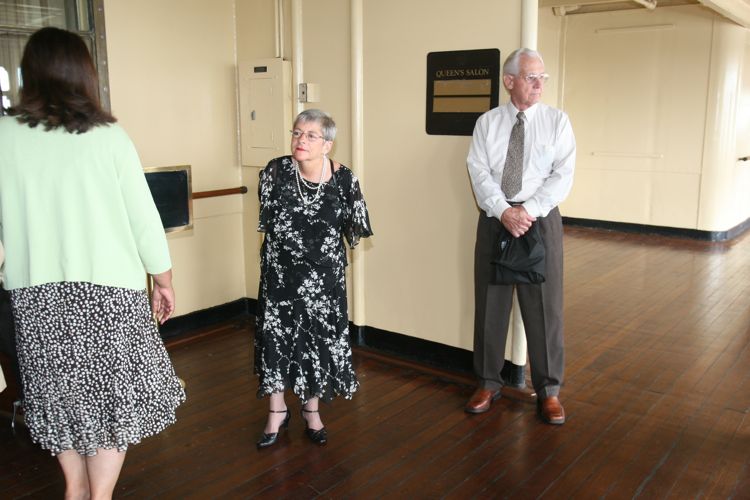
Vicky and Sue guard the entrance prepared to pounce when the time comes

Inside, Del hits the food line
Did you know? - Afternoon tea is a light meal typically eaten between 3pm and 5pm. The custom of drinking tea originated in England when Catherine of Bragança married Charles II in 1661 and brought the practice of drinking tea in the afternoon with her from Portugal. Various places that belonged to the former British Empire also have such a meal. However, changes in social customs and working hours mean that most Britons will rarely take afternoon tea, if at all.
Traditionally, loose tea is brewed in a teapot and served in teacups with milk and sugar. This is accompanied by sandwiches (customarily cucumber, egg and cress, fish paste, ham, and smoked salmon), scones (with clotted cream and jam, see cream tea) and usually cakes and pastries (such as Battenberg, fruit cake or Victoria sponge). The food is often served on a tiered stand; there may be no sandwiches, but bread or scones with butter or margarine and optional jam or other spread
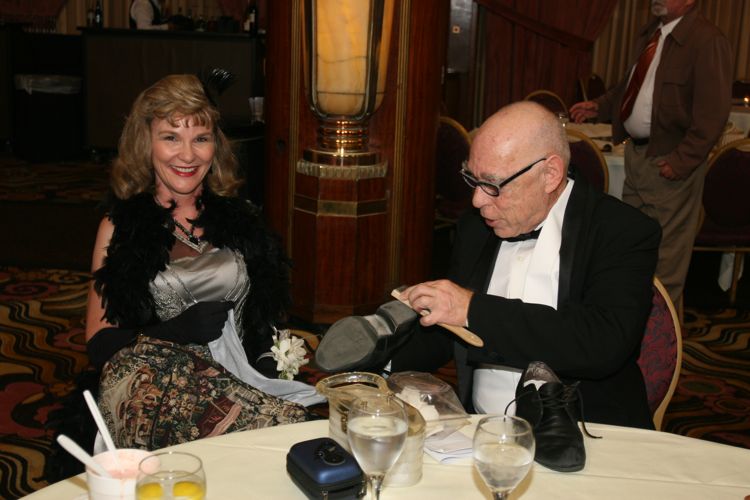
Preparing for the dance we comb our shoe soles...
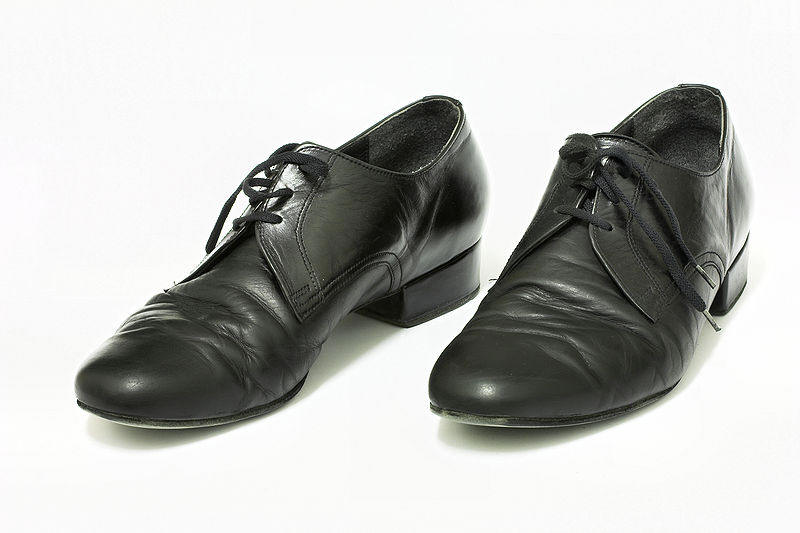
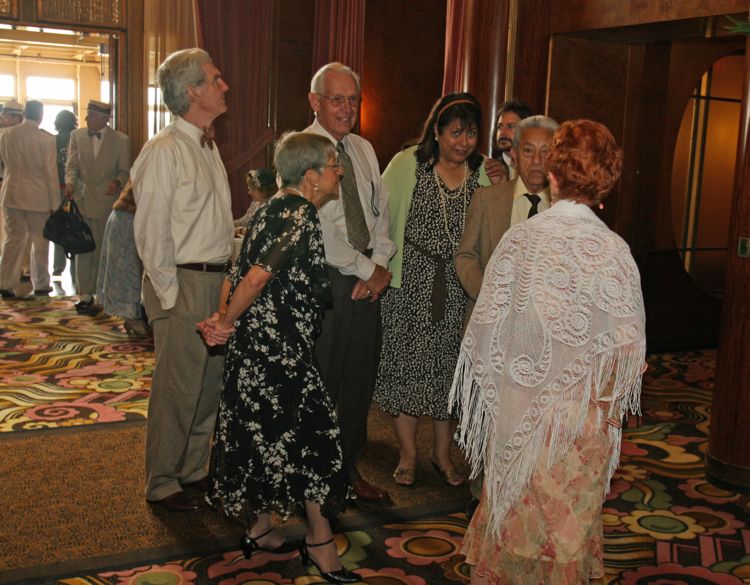
Discussing the facilities
The Musicians Tune Up
Did you know? - MORA'S RAGTIME ORCHESTRA was formed in 2006 to present the ragtime repertoire from the late 1890s to the 1910s, using period arrangements. This is pianist Dean Mora's effort to return to his "roots" (he started out on his adventure in vintage music some twenty years ago by playing in a ragtime band). The group's repertoire encompasses the wide variety of music popular during this period, from classic rags by Scott Joplin, to popular songs by Irving Berlin; from marches by John Phillip Sousa, to the tango and waltz dances.

The floor was polished to the hilt
Did you know? - A sprung floor is a floor that absorbs shocks giving it a softer feel. Such floors are considered the best available for dance and indoor sports and physical education. They enhance performance and greatly reduce injuries. Modern sprung floors are supported by foam backing or rubber feet, while traditional floors provide their spring through bending woven wooden battens. Many dance halls with sprung hard wood floors date back to the early 20th century, such as the Willowbrook Ballroom in Chicago (1921) and the Crystal Ballroom in Portland, OR (1914).
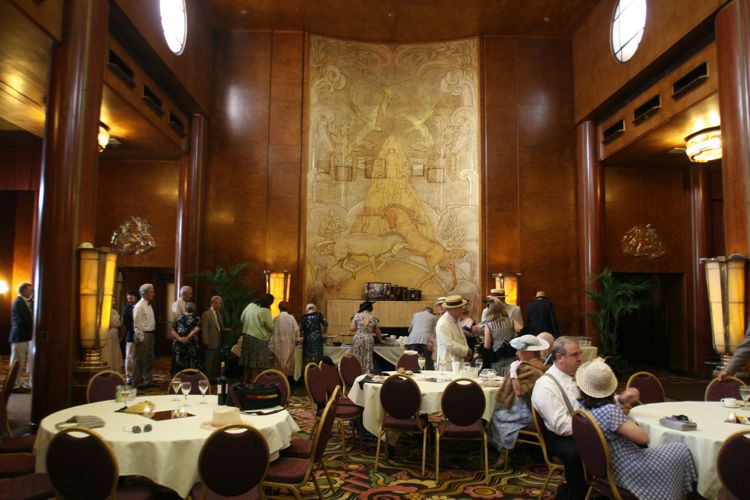
The room is beginning to fill up
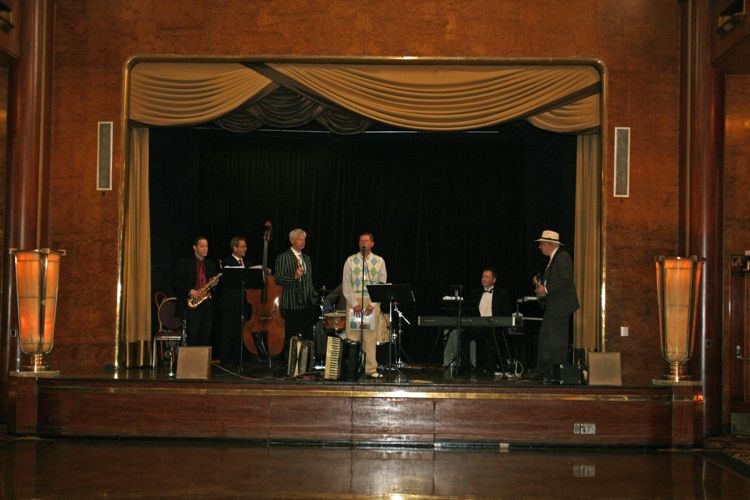
Be prepared, they are warmed up
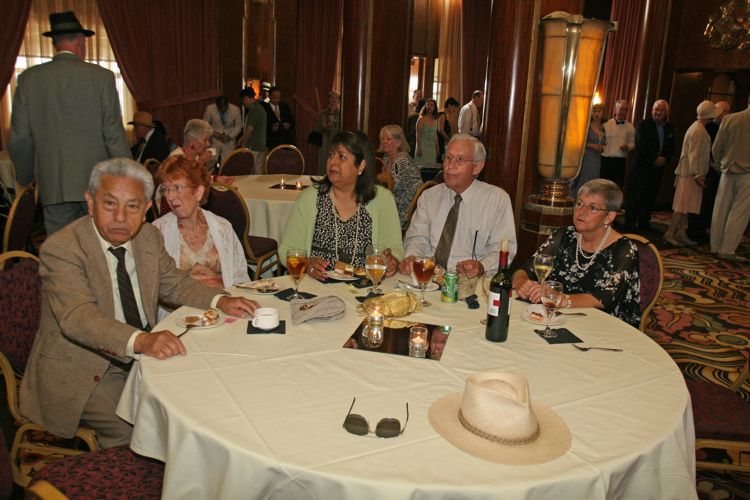
"Patiently waiting"
Let The Dancing Begin

Nancy and Vince are first on the floor
Dance etiquette are the conventional rules which govern the social behavior of dance by its participants. Such rules include the way in which the participants should look and the way in which they approach, dance with and leave their partner. Etiquette can vary in its specification and stringency between different styles of dance.
Simple rules to follow:
The line of dance, the movement of dancers around the floor, is counter clockwise.
Some dancers move parallel to the floor edge and some zig zag but always counter clockwise.
When things go wrong on the dance floor always apologize. Just as in driving it always takes two to create a collision. Generally it does not matter who is at fault.
If you are moving slowly with respect to other dancers keep to the center of the floor.
If you are engaged in conversation move off the dance floor.
To cross the room either dance across the floor or walk around the perimeter.
Carry food and beverages around the perimeter. Wipe up your own spills.
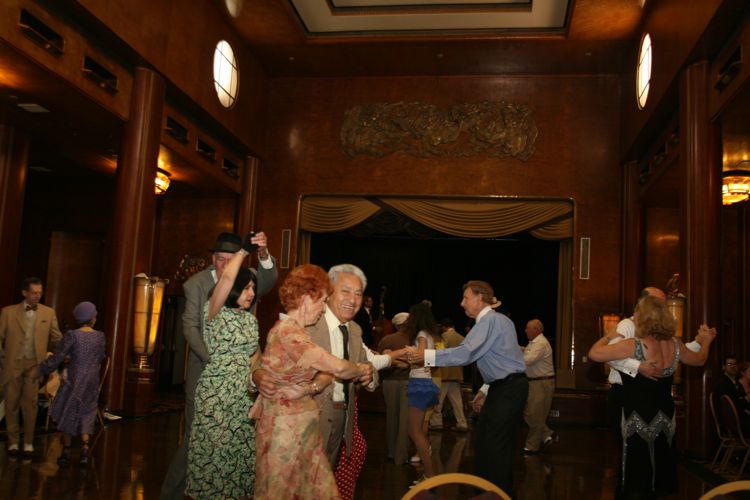
Splat, bang... crash
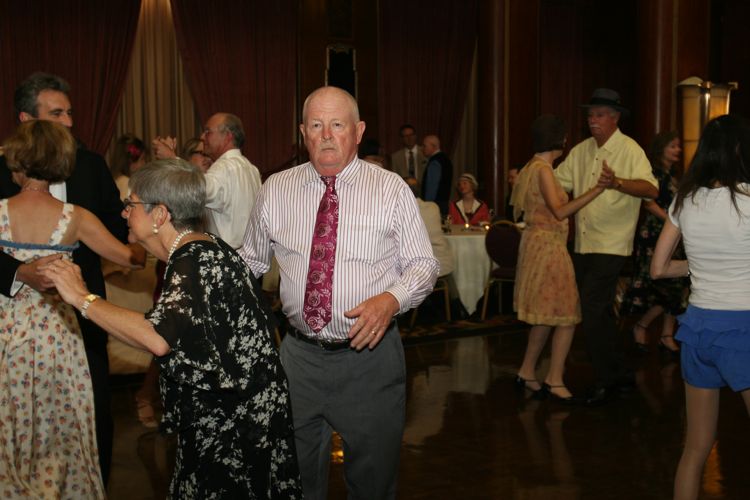
What is he looking at?
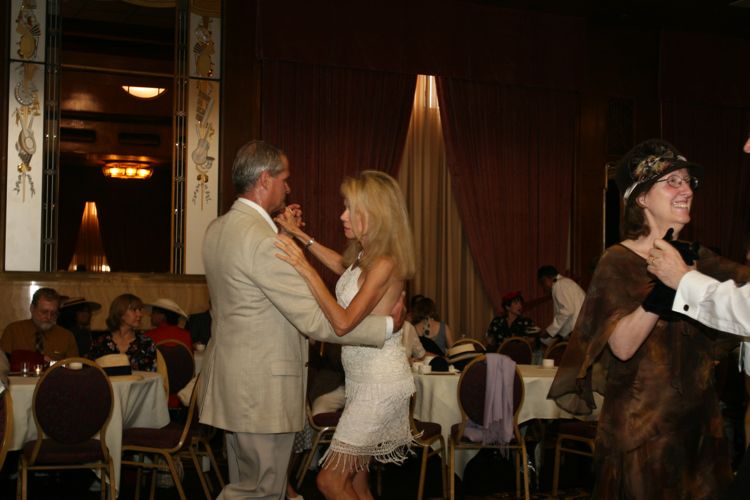
Craig and Maryanne are tripping the light fantastic
Did you know? - To "trip the light fantastic" is to dance nimbly or lightly, or to move in a pattern to musical accompaniment.
This phrase evolved through a series of usages and references. The phrase is typically attributed to Milton's poem L'Allegro, but a somewhat similar phrase appears in Shakespeare's The Tempest. The phrase in this modern usage comes from the lyrics of the song The Sidewalks of New York.
This expression became popular from the song " Sidewalks of New York " (melody and text by Charles B. Lawlor and James W. Blake) in 1894.
Boys and girls together, me and Mamie O'Rourke
Tripped the light fantastic
on the sidewalks of New York
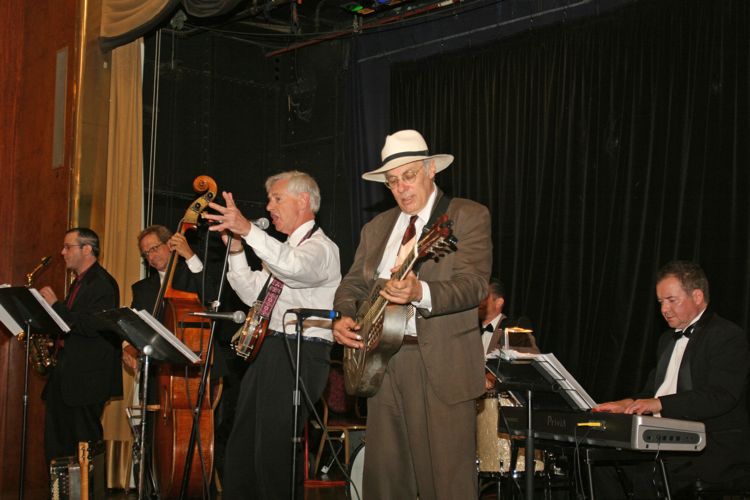 Ukuleles and
accordions were played
Ukuleles and
accordions were played
Did you know? - The ukulele, (pronounced YOO-Koo-leh-lee, from Hawaiian: variantly spelled ukelele in the UK), sometimes abbreviated to uke, is a chordophone classified as a plucked lute; it is a subset of the guitar family of instruments, generally with four nylon or gut strings or four courses of strings.
The ukulele originated in the 19th century as a Hawaiian interpretation of the cavaquinho, a small guitar-like instrument brought to Hawai'i by Portuguese immigrants. It gained great popularity elsewhere in the United States during the early 20th century, and from there spread internationally.
Tone and volume of the instrument vary with size and construction. Ukuleles commonly come in four sizes: soprano, concert, tenor, and baritone
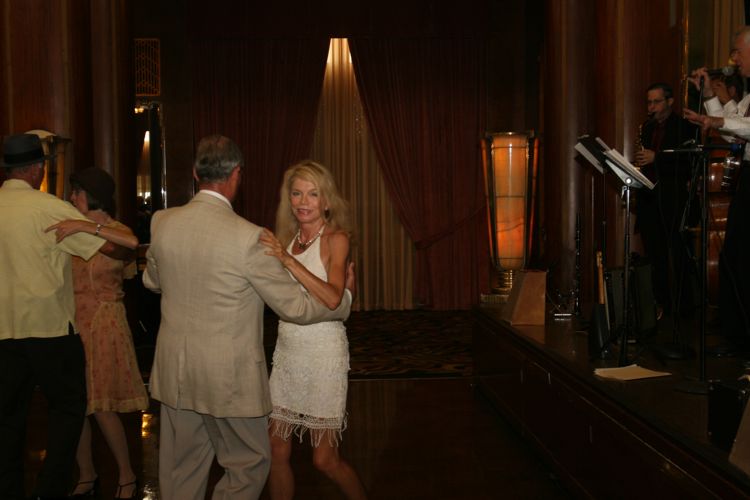
Gliding across the floor
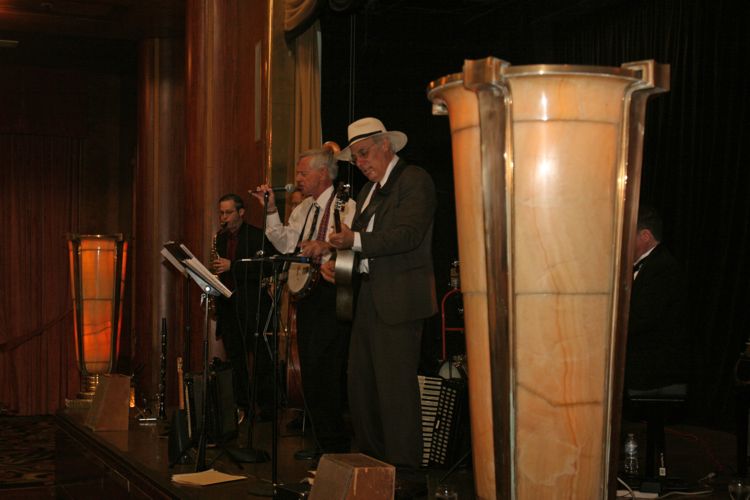
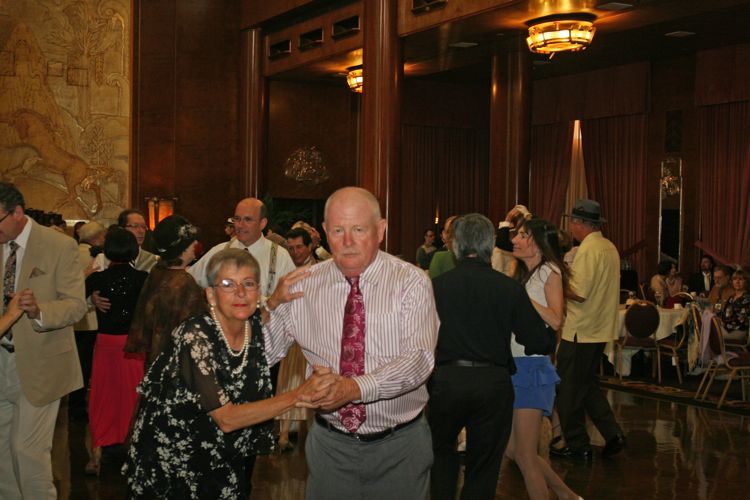
In the thick of things
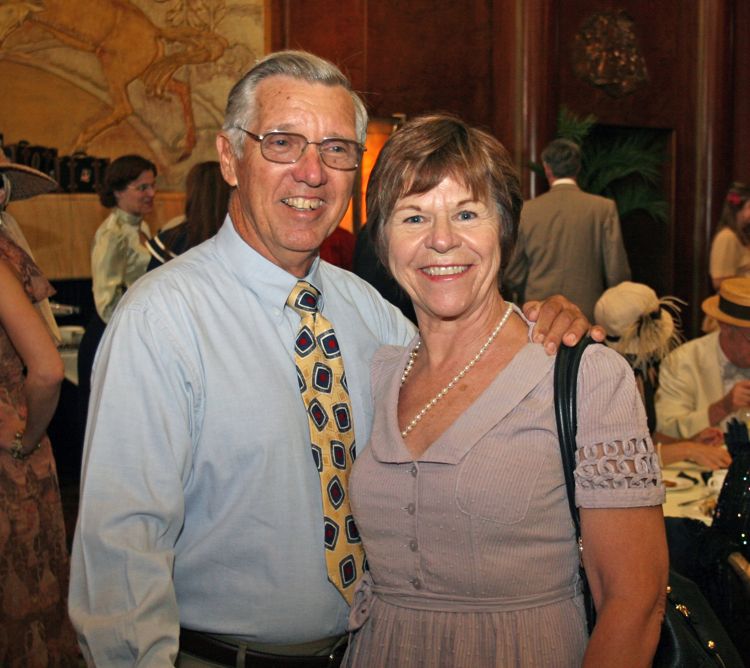
Ed and Kathy arrive

Craig and Maryanne
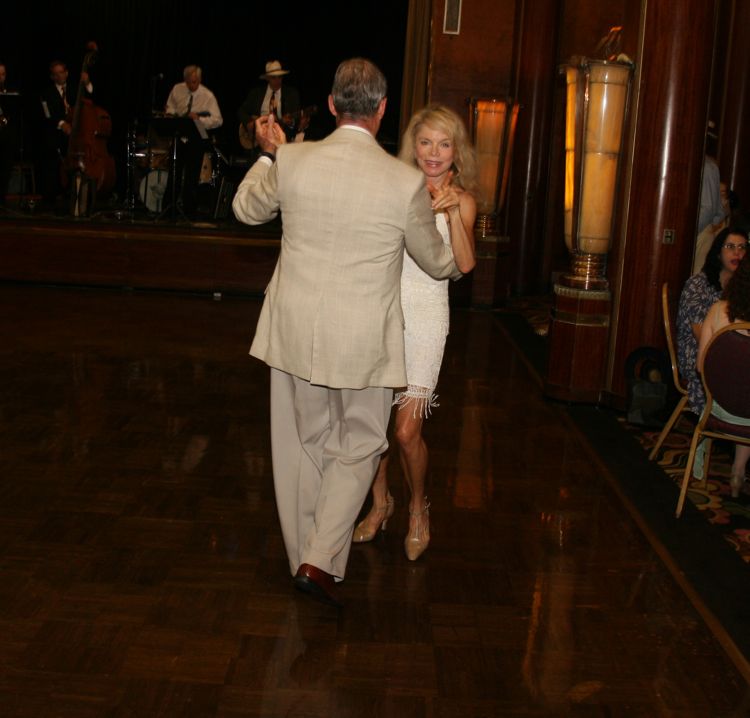
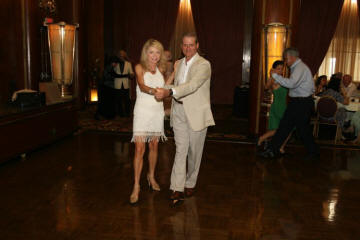
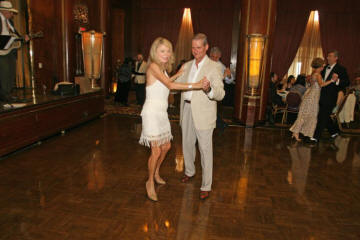
...and they thought the dancing would be too fast

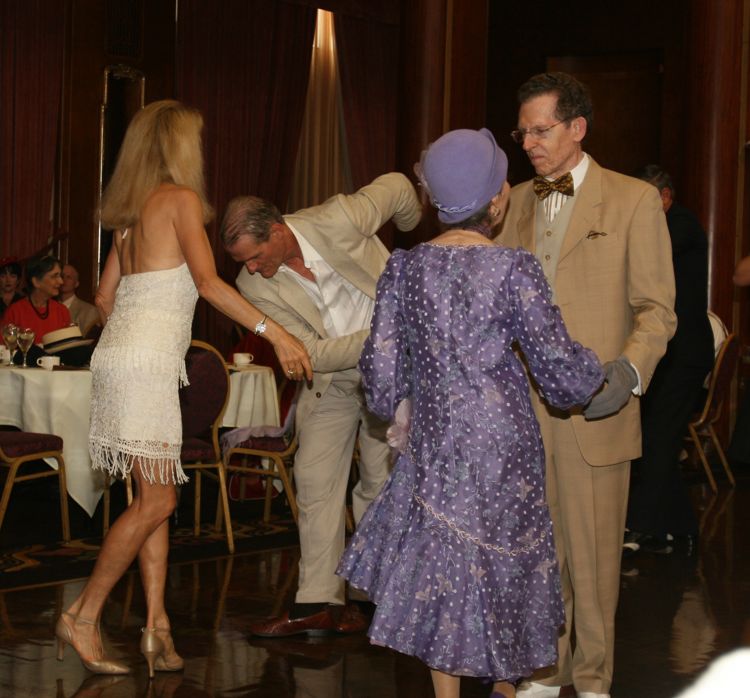
What a gentleman
Did you know? - Bowing (also called stooping) is the act of lowering the torso and head as a social gesture in direction to another person or symbol. It is most prominent in Asian cultures but it is also typical of nobility and aristocracy in many countries and distinctively in Europe. Sometimes the gesture may be limited to lowering the head. It is especially prominent in China, Korea, India, Taiwan, and Japan where it may be executed standing or kneeling.
n European cultures — aside from bows done by performers on stage, such as at the curtain call — bowing is an exclusively male practice, and females instead perform a related gesture called a "curtsey" or "curtsy." The depth of the bow is related to the degree of respect or gratitude. In European courtly circles, males were expected to "bow and scrape" (hence the term "bowing and scraping" for what appears to be excessive ceremony). "Scraping" refers to the drawing back of the right leg as one bows, such that the right foot scrapes the floor or earth. Typically, while executing such a bow, the man's left hand is pressed horizontally across the abdomen while the right is held out from the body.

"So, Maryanne.... Did he scrape also?????"
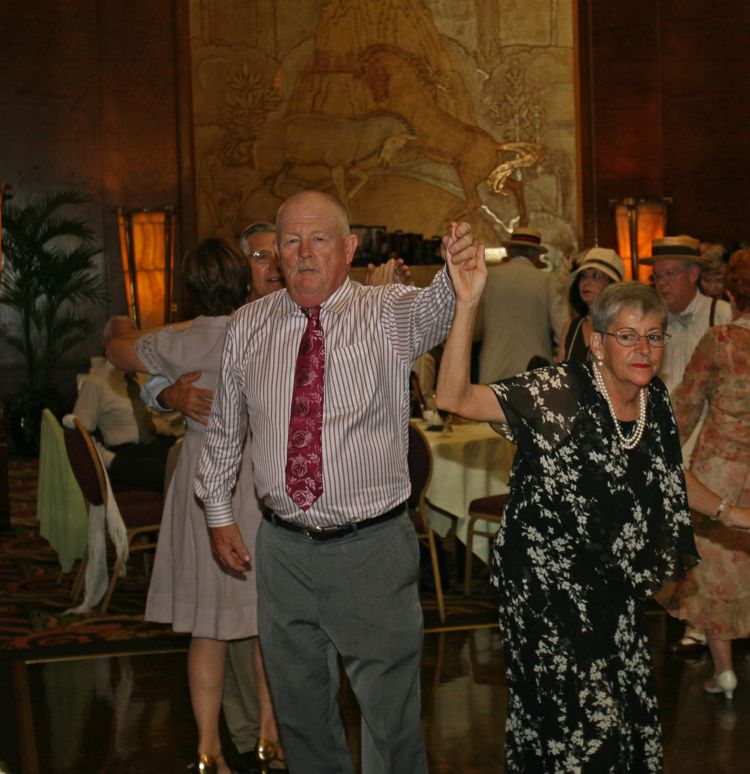
We are moving faster than you think
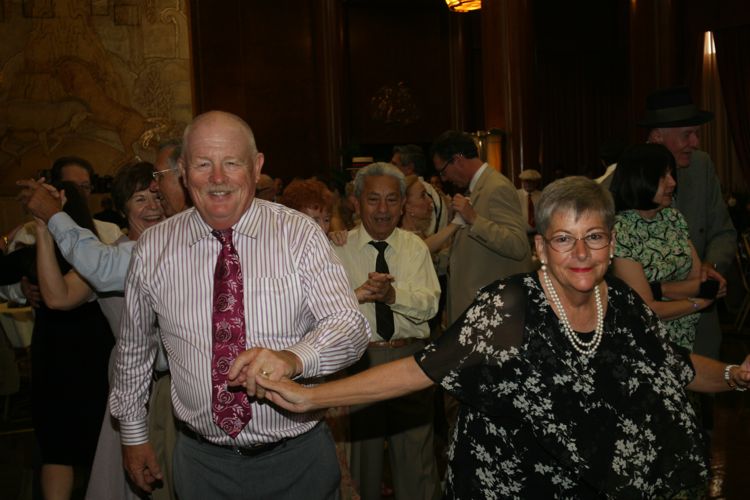
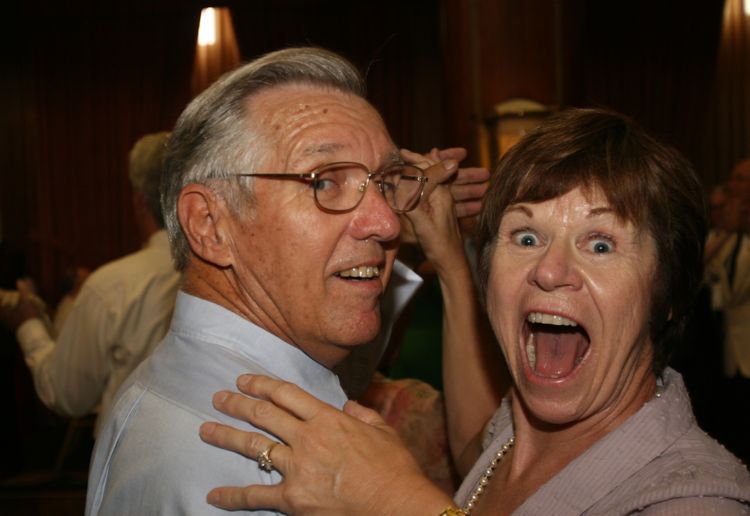
"Do you know what Ed just said to me???"
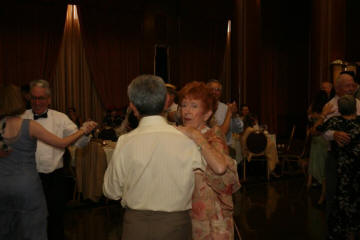
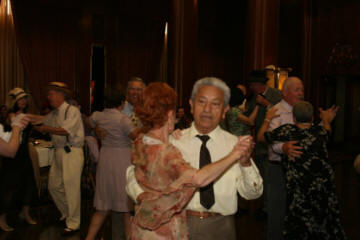
Nancy and Vince have already made their 100 laps around the floor


Del keeps the evil eye on everything... Just in case it is needed
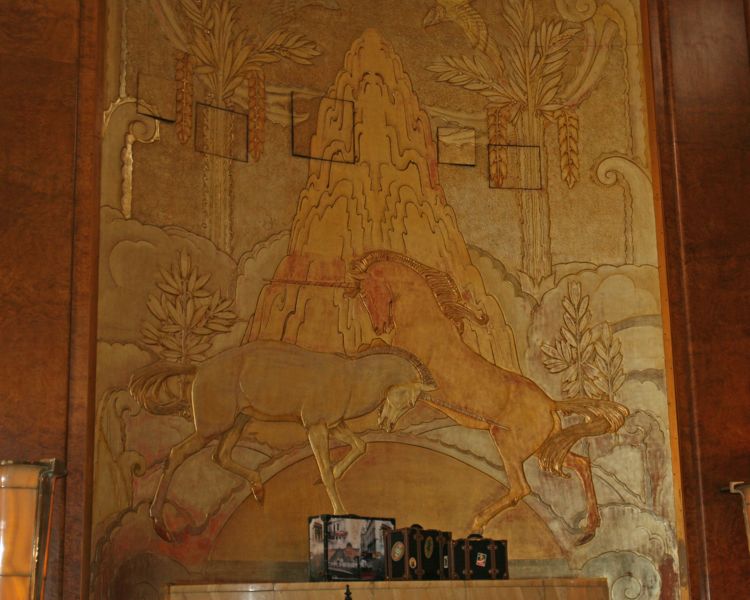
The great horney horses (I think there is another name for it)
Did you know? - In popular belief, examined wittily and at length in the seventeenth century by Sir Thomas Browne in his Pseudodoxia Epidemica, unicorn horns could neutralize poisons. Therefore, people who feared poisoning sometimes drank from goblets made of "unicorn horn".
Alleged aphrodisiac qualities and other purported medicinal virtues also drove up the cost of "unicorn" products such as milk, hide, and offal. Unicorns were also said to be able to determine whether or not a woman was a virgin; in some tales, they could only be mounted by virgins.
In one of his notebooks Leonardo da Vinci wrote:
"The unicorn, through its intemperance and not knowing how to control itself, for the love it bears to fair maidens forgets its ferocity and wildness; and laying aside all fear it will go up to a seated damsel and go to sleep in her lap, and thus the hunters take it."

Meanwhile our group keeps the dust stirred up
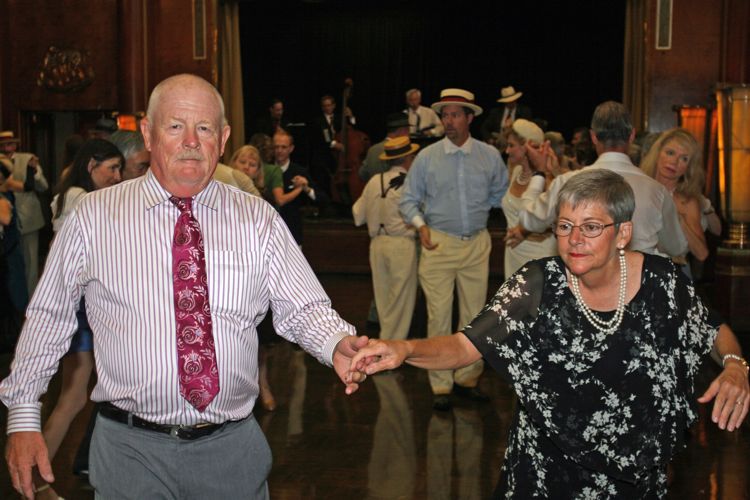
Beauty and the Beast

Hot cha cha!
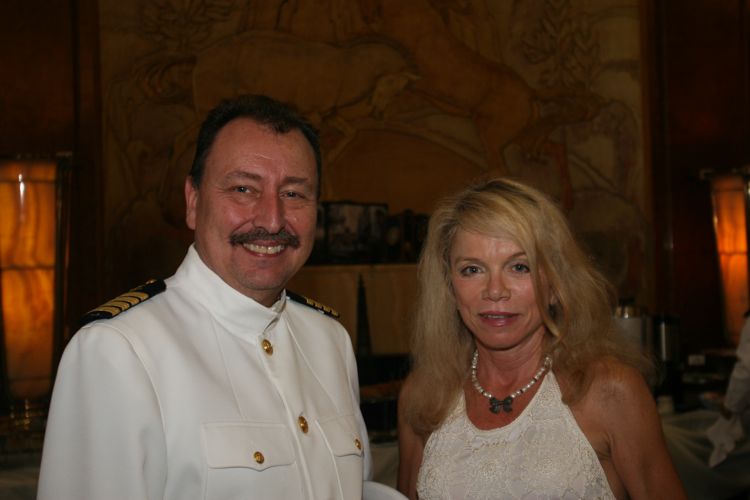
Maryanne cornered the Captain of the ship
Did you know? - This is the old girls 75th birthday..... The Queen Mary, not Maryanne

Meanwhile the band is getting a bit wild
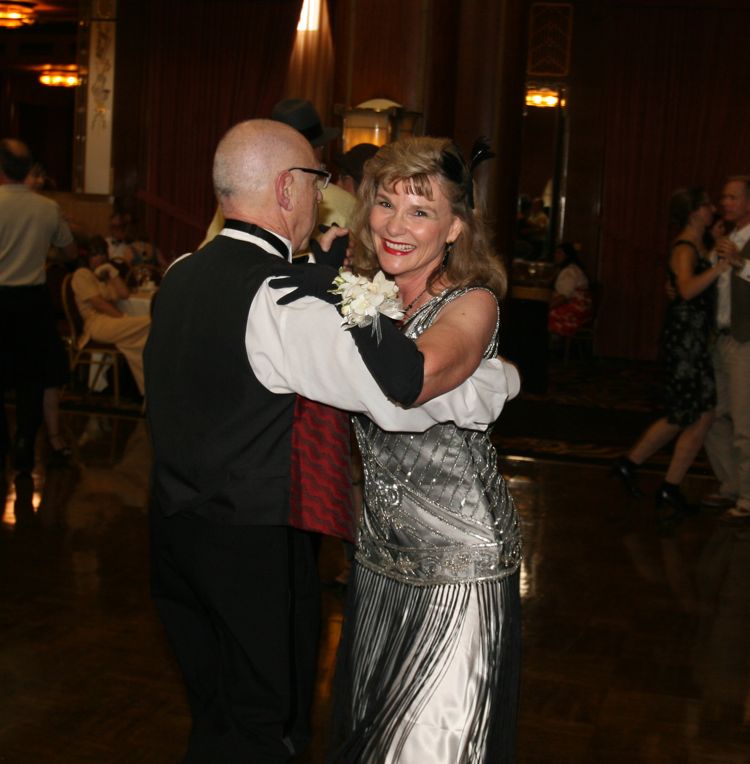
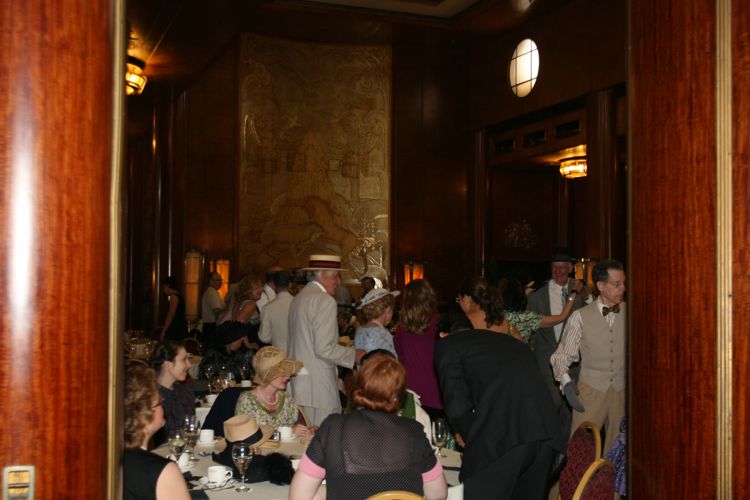
The great columns supported this two story ballroom
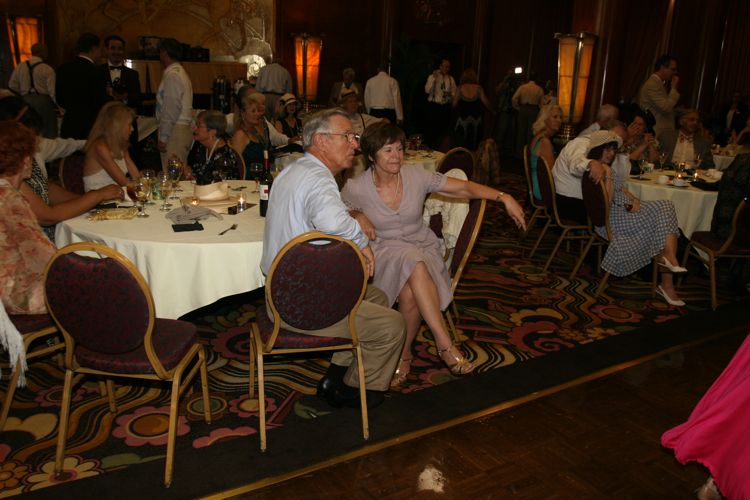
Our table was perfect... We could see the dancers and jump up at a moments notice
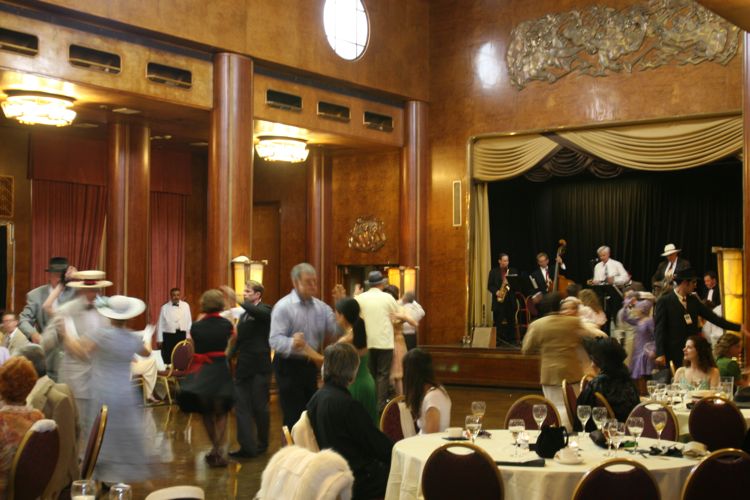

Amazing artwork survived the restoration
"Dancing Aid" Was Being Taken In At Amazing Rates

Kathy demonstrates the proper way to hold a glass of "Dancing Aid"
Did you know? - The traditionally held-to-be proper way to drink from a wine glass, especially when drinking white or otherwise chilled wine, is to grasp it by the stem. The most commonly accepted reasoning for this is to avoid fingerprints on the bowl, and to prevent the temperature of the wine from being affected by body heat.
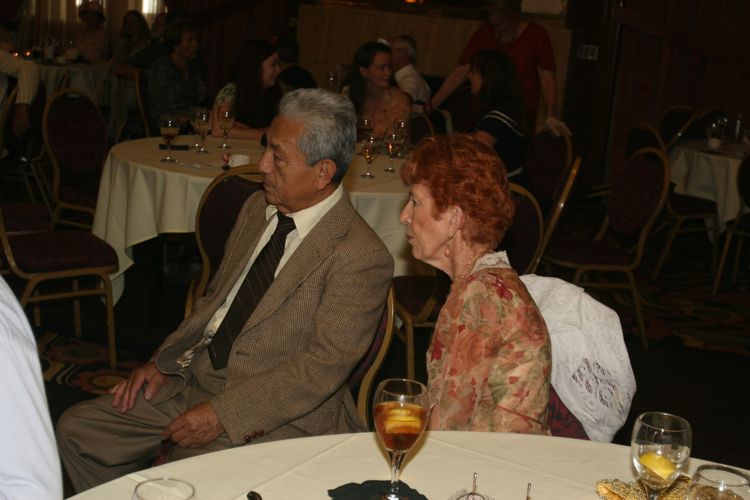
"Should be dance some more?"

"Duh"

Their off and running
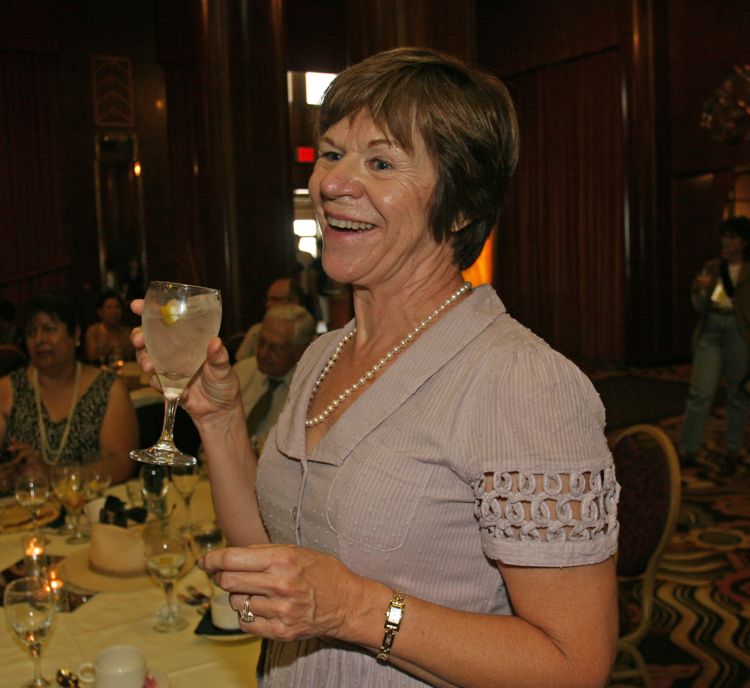
"Ah... A white wine chaser"
Did you know? - A "chaser" is a mild alcoholic drink (often beer) that is quickly drunk after a straight shot of liquor
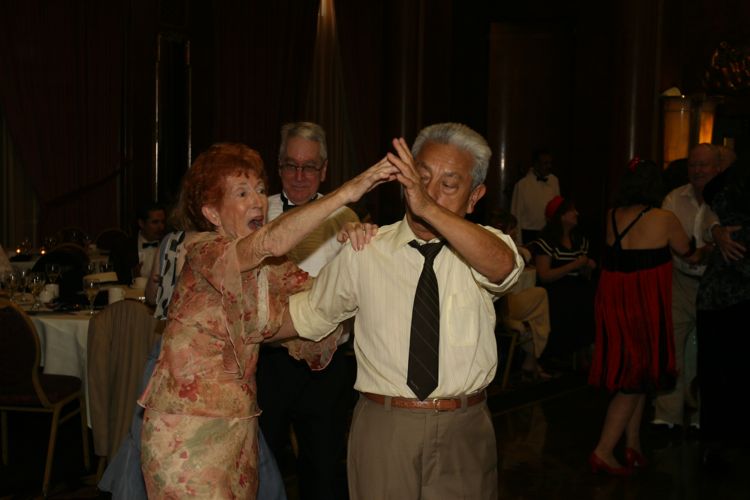
"Vince.... wait for me!"
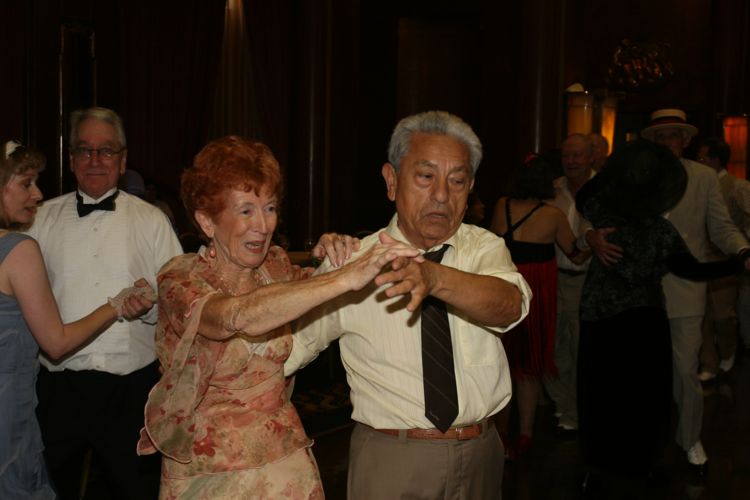
Remember: "We're fools whether we dance or not, so we might as well dance." ~Japanese Proverb

Remember: "There is a bit of insanity in dancing that does everybody a great deal of good." ~Edwin Denby
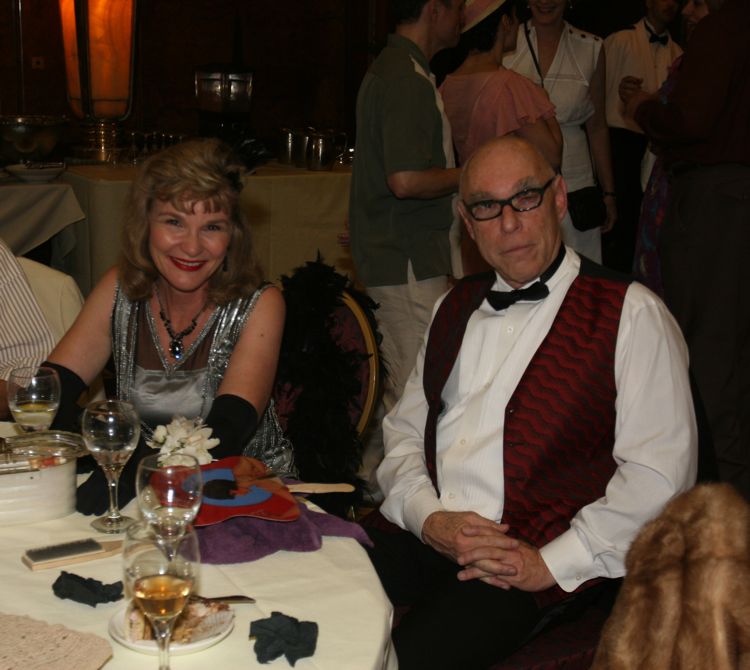
Time For A Break
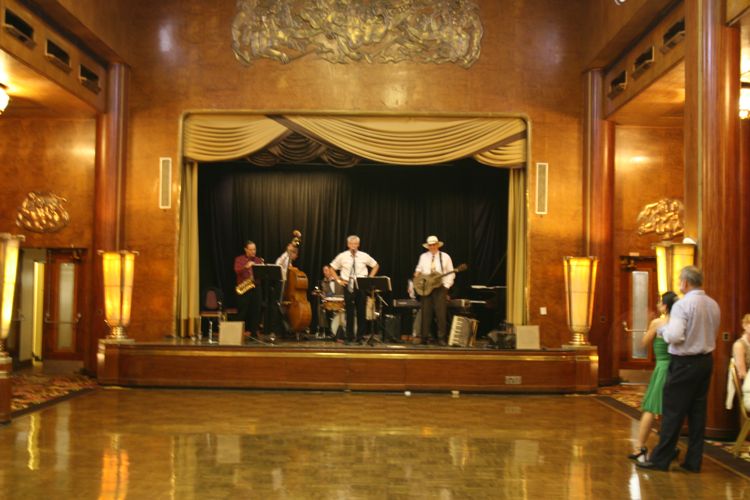
They must let the strings cool down
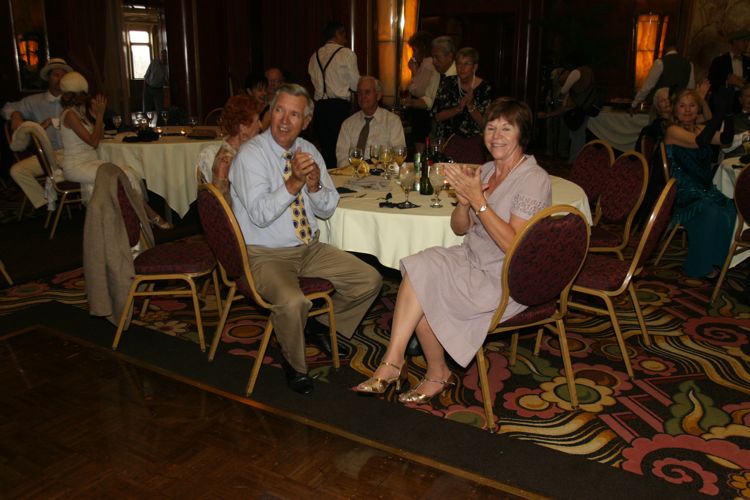
Ed and Kathy are enjoying the music and dance
Remember: "Dancing faces you towards Heaven, whichever direction you turn." ~Terri Guillemets
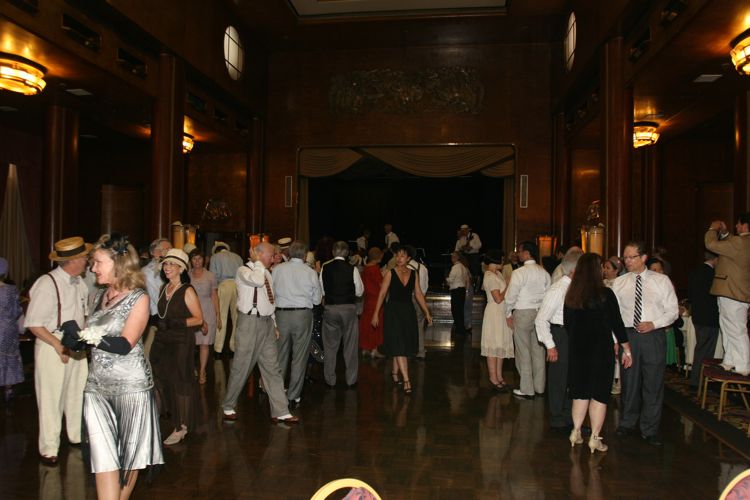
Lookout the herd is coming this direction
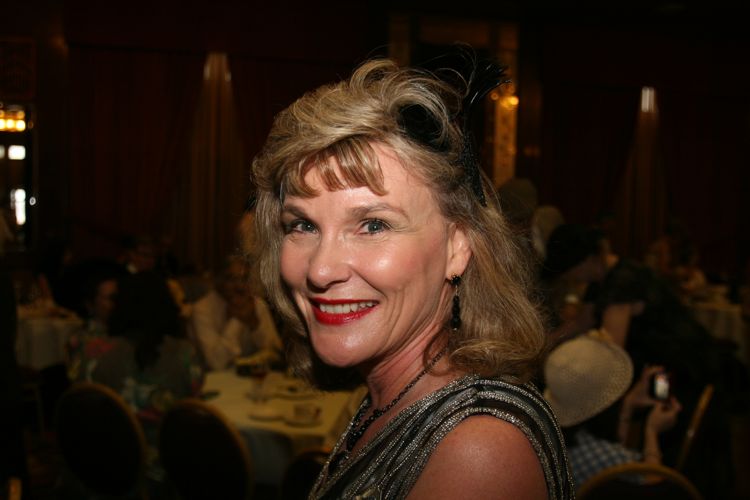
Dr. Mary
Remember: "Dancing is moving to the music without stepping on anyone's toes, pretty much the same as life." ~Robert Brault
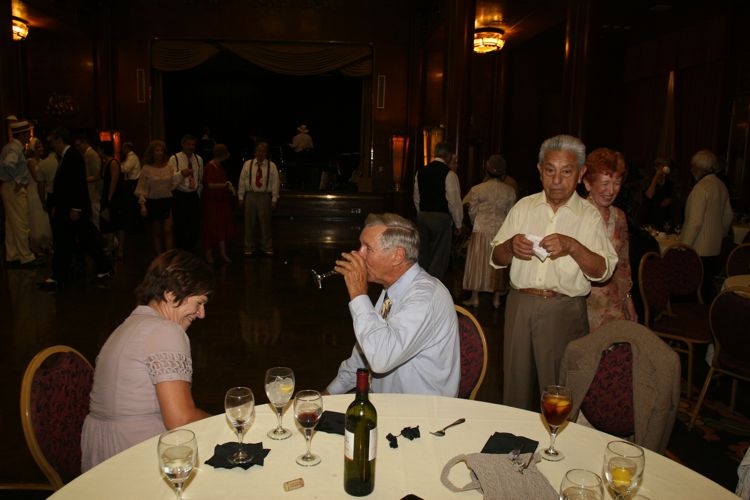
Dang... He loves his "Dancer's Assistant"
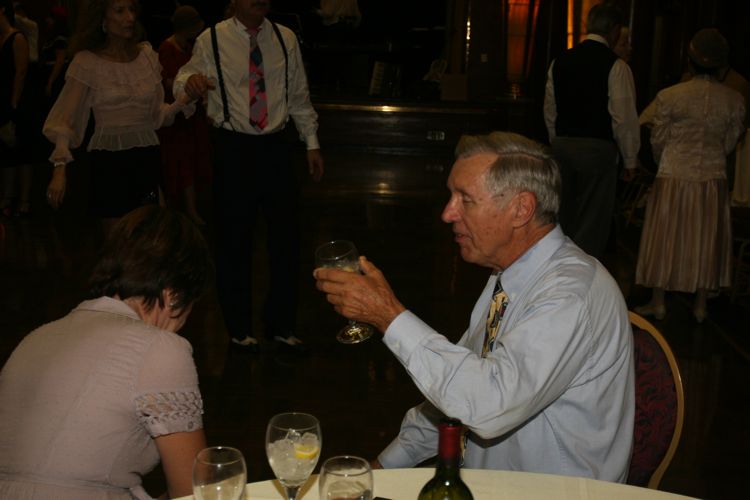
This little glass of "dancer's Assistant" really works
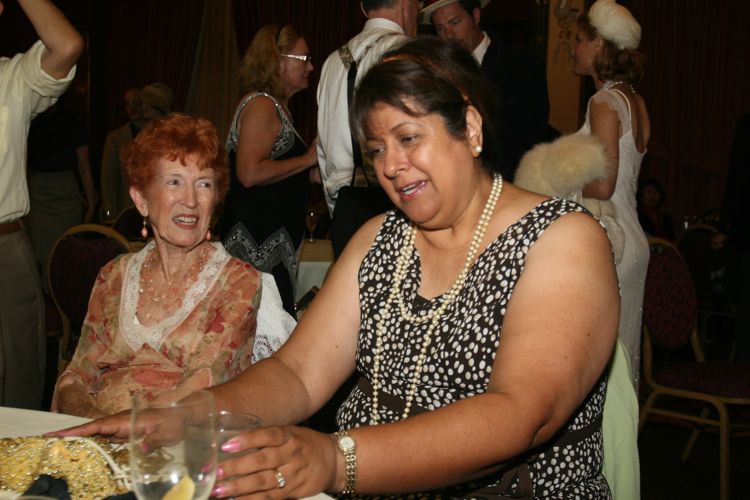
Nancy, do I need "Dancers Assistant" also?

Ed's question of the day - Do you think dyslexic people have difficulty dancing to "Y.M.C.A."?
Vicky Checkout The Days Styles
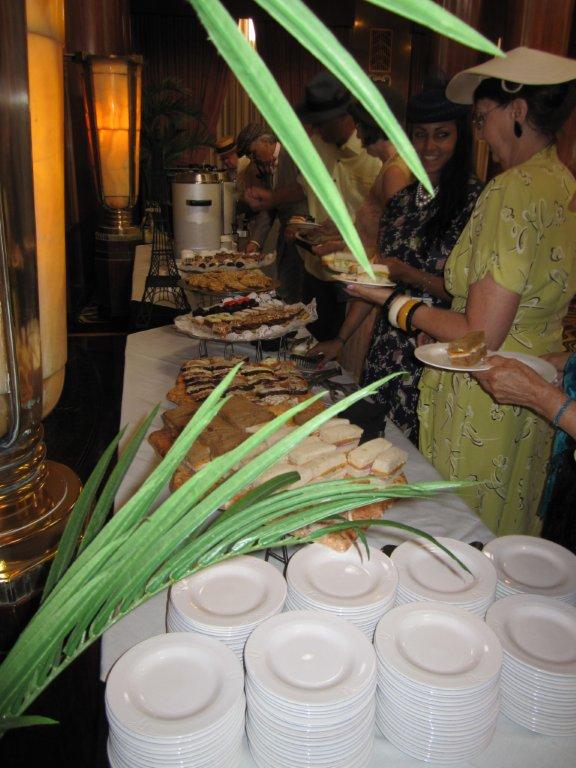
No calories
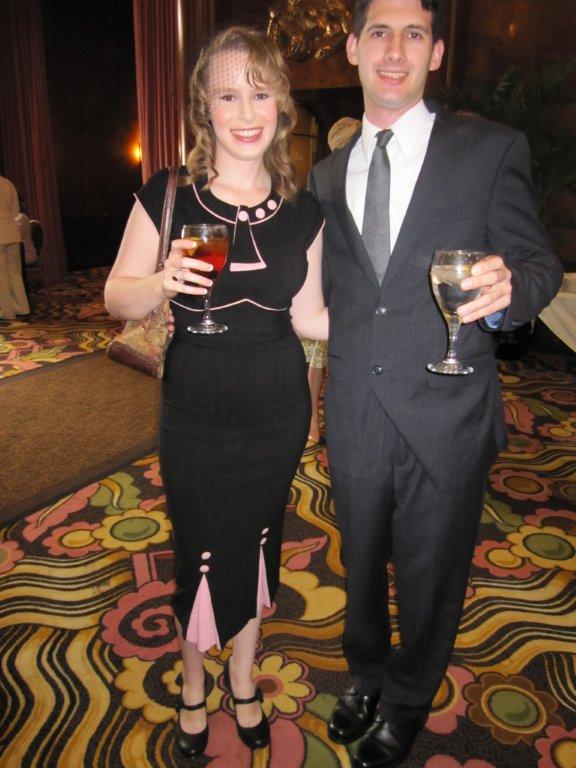
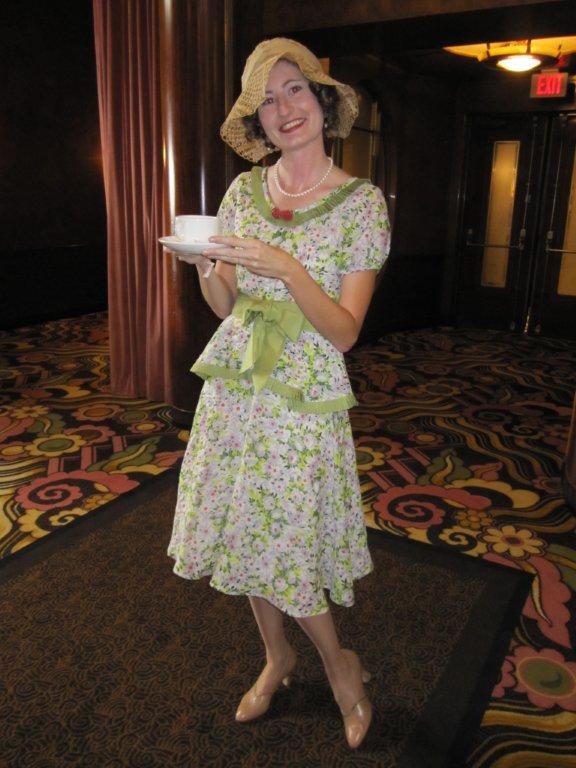

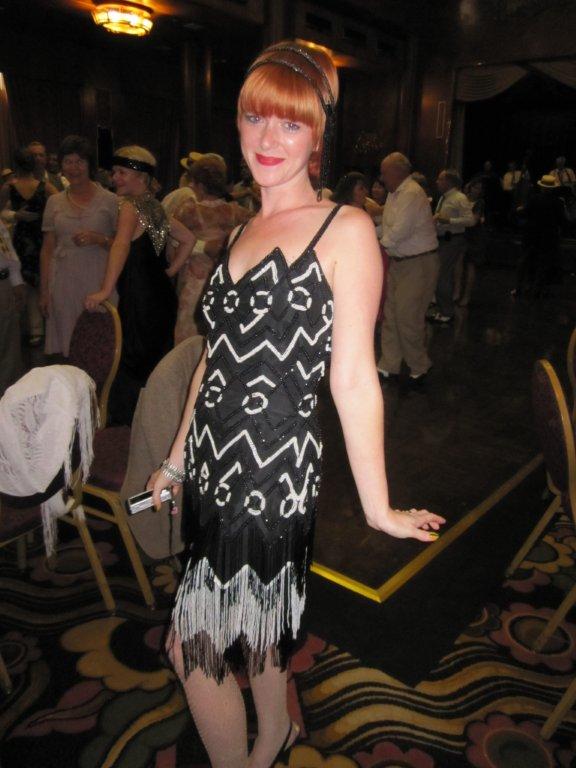
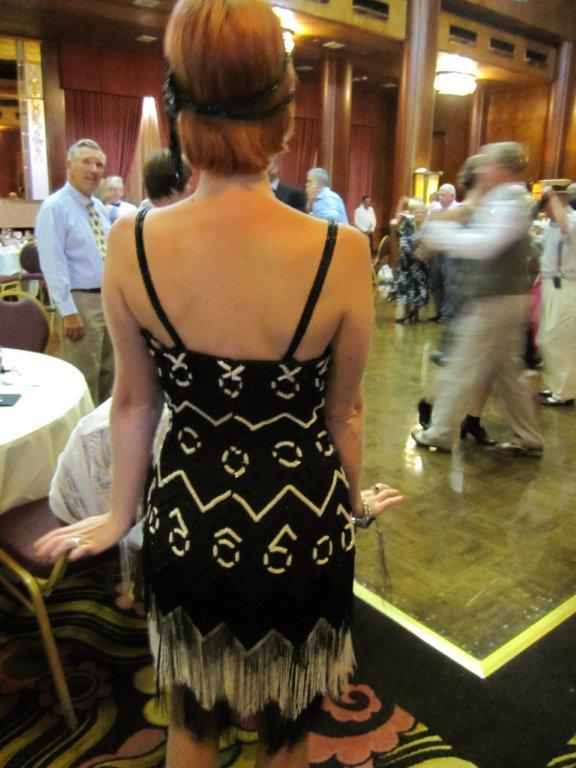
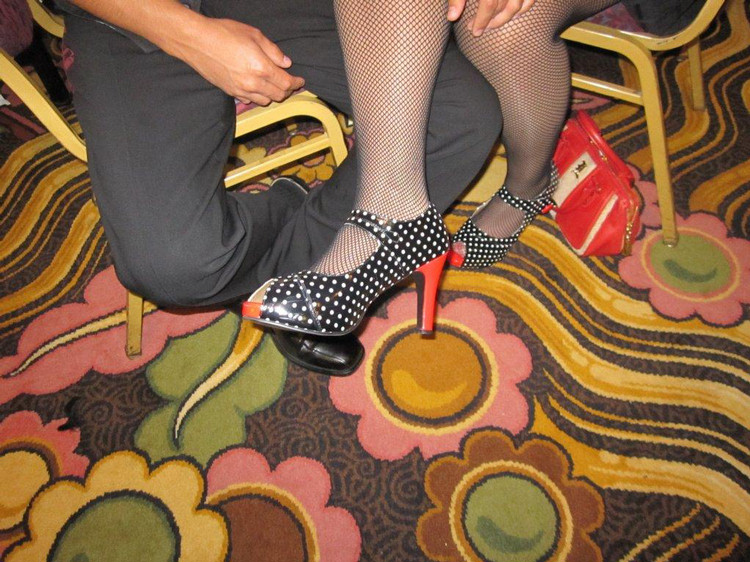
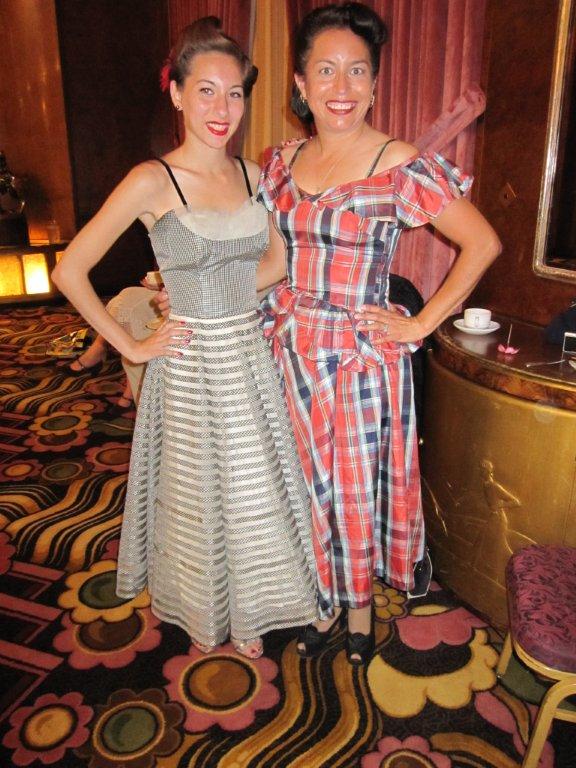
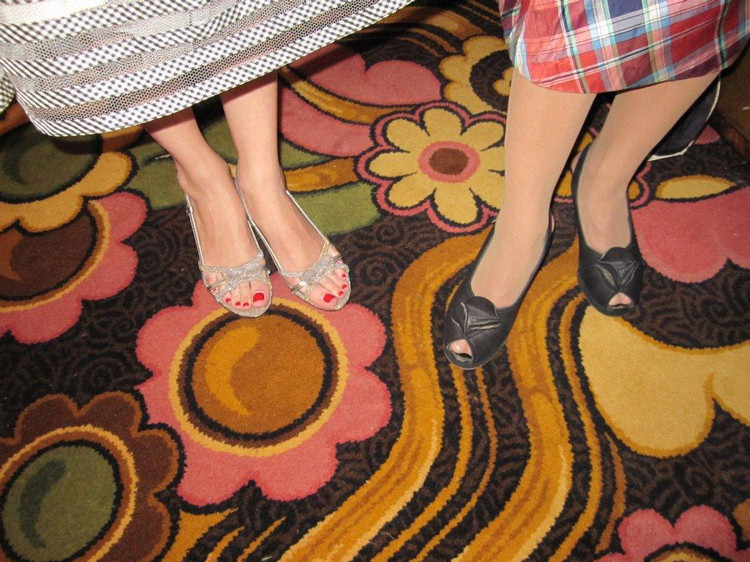
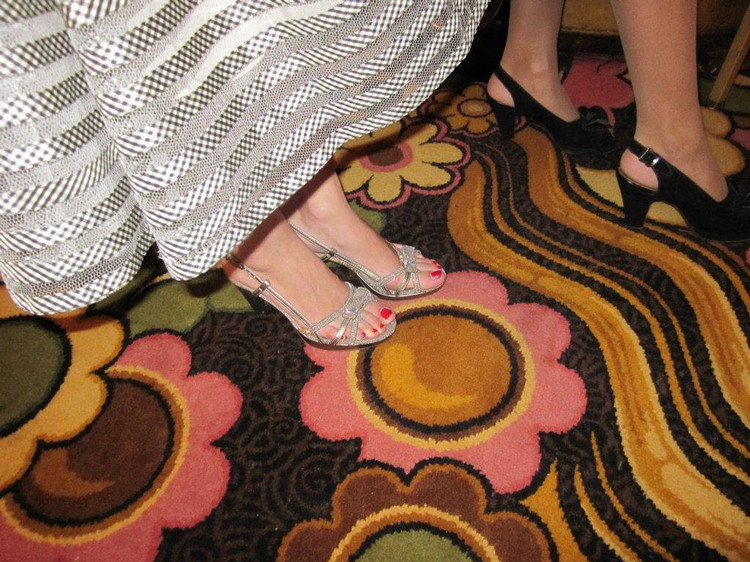
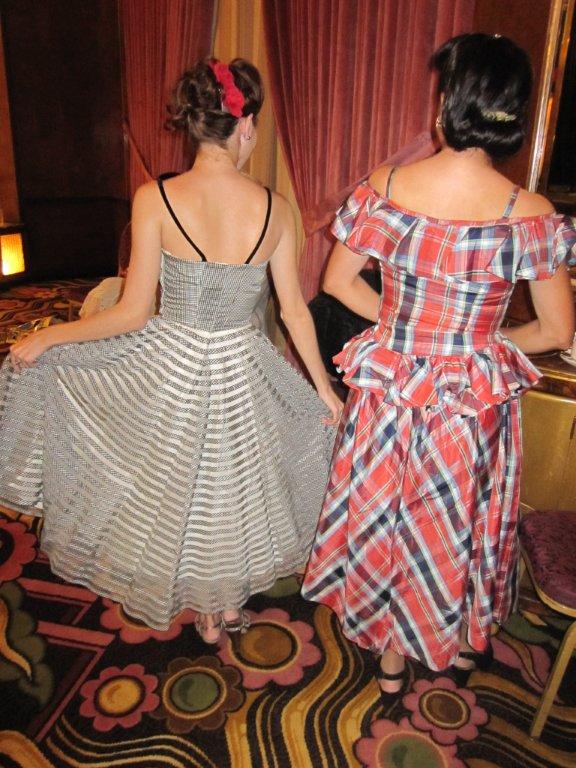
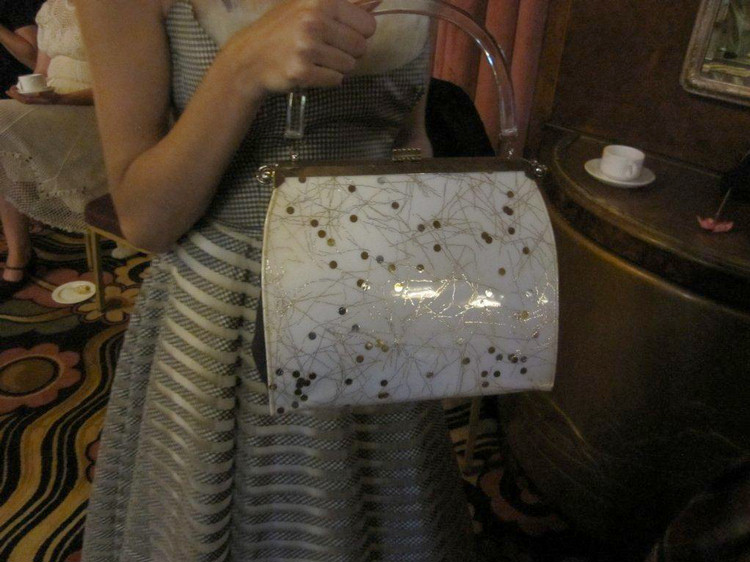
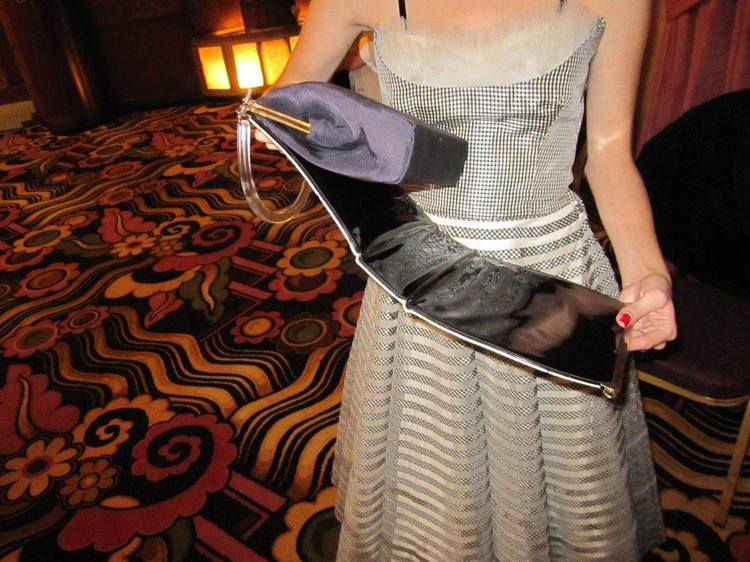
What a wonder day....


